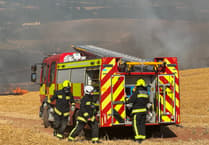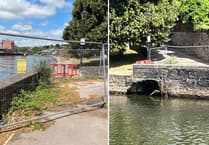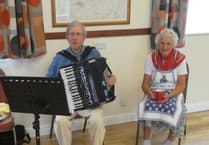HENRIETTA Quinnell, archaeologist affiliated with the University of Exeter with extensive experience of excavation in the South West of England, led a group of 16 people from Thorverton and District History Society for an evening walk to see some of the Early Bronze Age (2,500-1,500 BC) barrows in fields to the north of Upton Pyne on August 4.
More than 40 Bronze Age round barrows are recorded in the area bounded by the Raddon Hills, Stoke Hill, Nether Exe and Jackmoor.
Most are now barely discernible undulations in fields as a result of overploughing. The group visited the sites of the only barrows to have been excavated.
In the pasture of Site I, to the west of the Upton Pyne road, a row of barrows has been described, one of them recorded as containing peat, clay and stones excavated by Rev Richard Kirwan in 1869: this contained a cremation with a bronze knife, a composite necklace, a bronze pin and a small, so-called "incense cup".
A recent radiocarbon date indicated the 16th century BC. E. Parfitt in 1879 excavated the barrow to either side but only found charcoal and signs of burning.
The pasture of Site II, to the east of the road, bears the striking, unexcavated barrow crossed by a hedge, visible from the road.
To the south west of it, and much less obvious, is the site of a 20-metre barrow dated to 17-1,500 BC excavated by Sheila Pollard in 1969.
This was constructed upon a platform cut into the side of a slight slope, using a variety of different layers such as turf and bleached podsol, with some material brought from a distance. It contained four inverted vessels, two containing a few tiny fragments of human cremated bone.
Henrietta emphasised that the barrows were probably constructed and used over long periods of time and were not merely burial mounds. She confirmed that their function within the communities who made them, like their belief systems, is likely to remain unknown.
Finally, Richard Pocock, chair of the History Society, proposed a vote of thanks for the highly, enjoyable tour, which stimulated many observations and questions from the group. He acknowledged the kind permission of the Earl of Iddesleigh to explore the barrows on his land.
M Stannard





Comments
This article has no comments yet. Be the first to leave a comment.